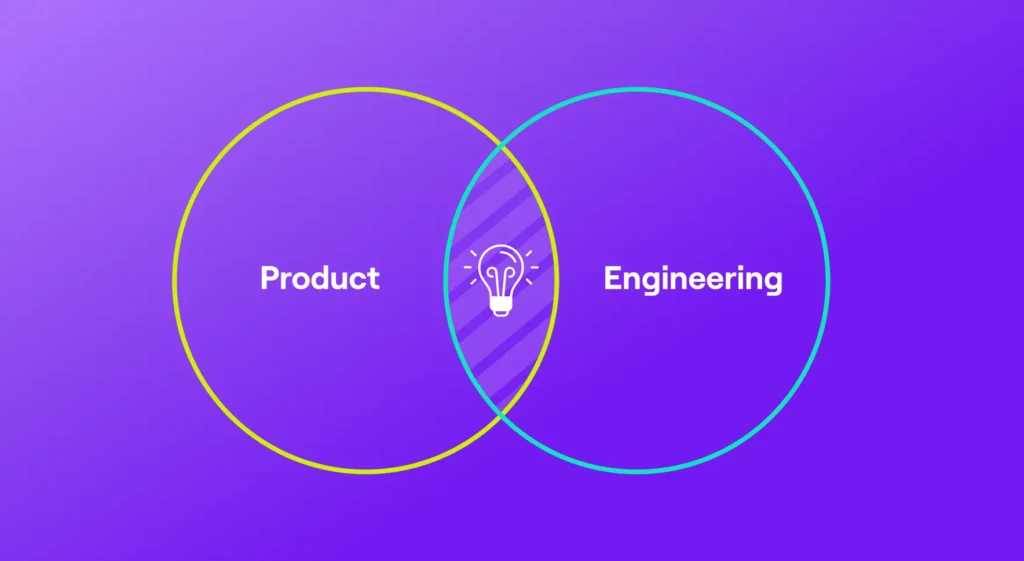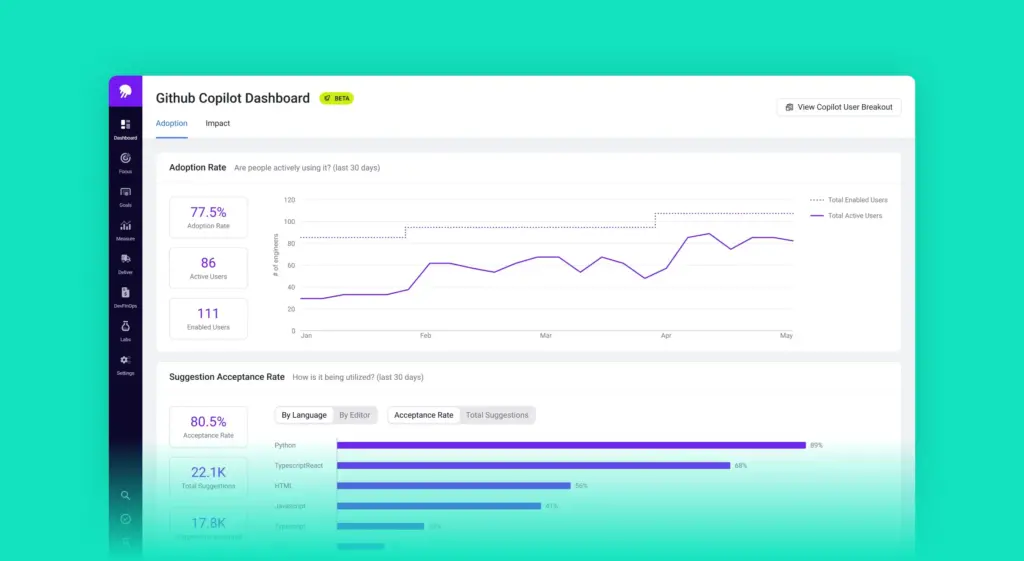In a recent InfoQ Engineering Culture podcast, Shane Hastie sat down with Andrew Lau, my good friend, boss, and CEO/Co-Founder of Jellyfish, to discuss our 2024 State of Engineering Management report, the overall engineering climate, and what to expect as we head into next year.
Now in its fifth annual iteration, the SEMR provides a comprehensive snapshot of the ever-evolving world of software engineering management – a survey of 600 software engineering professionals, offering key insights into the challenges and trends shaping the field. From burnout and staffing shortages to the rise of AI, here are the major themes and where we go from here:
The Ever-Changing Landscape of Engineering Management
The overarching theme in this year’s report is flux – hiring, workflows, and integrating new technologies, particularly AI, are all in a state of rapid change. While the talent shortage in engineering persists, the work landscape is shifting. Andrew describes the current state as “a snapshot at a time where we’re all still trying to figure it out,” noting the impact of the pandemic, economic instability, and technological evolution on how engineering teams operate.
The SEMR offers a 360-degree view of engineering management, surveying managers, contributors, and executives, allowing for a more nuanced understanding of the field.
Burnout is on the Rise
Overall, 65% of SEMR respondents experienced burnout in the past year, though it varies by team size and role. Andrew attributes this to multiple factors, including staffing shortages, the ongoing transition to hybrid work, and economic uncertainty. He acknowledges that while many organizations have adapted to hybrid work environments, there remains a struggle to create the same sense of camaraderie that existed in traditional office settings.

Burnout is a pressing issue; the first step toward addressing it is acknowledging it. “If you don’t point out the issues, it’s unclear how you’d ever resolve it,” Andrew says. Leaders need to engage with their teams, listen to their needs, and collaborate to find actionable solutions.
The Perception vs. Reality of AI Adoption
The SEMR also uncovers a large gap between the perception and reality of AI in the workplace. While 76% of executives reported using AI tools like generative AI and large language models (LLMs), only 52% of engineers said the same. This discrepancy points to a broader challenge – AI is being discussed at the executive level, but its actual adoption and implementation among engineering teams are still in progress.

Andrew highlights the “fear and greed” dynamic that drives AI adoption. On the one hand, businesses see AI as a tool for increasing efficiency and unlocking new opportunities. On the other hand, there’s a fear that competitors will embrace AI first, leaving others behind. He stresses that resisting AI adoption is futile and that engineering teams should engage with the technology, like AI coding assistants, to drive its use to benefit both the business and the individual engineer. Figuring out AI’s actual impact on engineering organizations will be a harder task once adoption is firmly underway.
Embracing Change Ethically
When it comes to embracing AI and other technological advancements, Andrew acknowledges that ethical considerations are paramount. From protecting rights holders to addressing changes in roles, he notes that different ethical concerns must be addressed. Andrew advocates for engaging with technology to ensure its development is steered in a direction that promotes positive outcomes for individuals, organizations, and society. Ignoring the challenges posed by AI and hoping they go away, he argues, will only lead to negative consequences.
The Changing Role of Software Engineers
As AI continues to influence software development, the role of the software engineer is evolving. Moving forward, the basic act of coding will increasingly be handled by AI-driven tools, with engineers taking on more oversight and becoming more involved in reviewing code and designing high-level architecture. This shift may lead to software engineers playing roles similar to that of product managers, focusing on ensuring that the systems they build meet the needs of end users and businesses.
Andrew points to historical parallels for those concerned about the future of software engineering. Just as higher-level frameworks replaced lower-level languages like assembly and C, AI-driven tools are poised to elevate engineers’ work. Those who embrace this change will find new opportunities, while specialists in traditional coding roles will remain valuable.
Navigating the Skills Gap
One question arising from this shift is how to help newer engineers build foundational skills. Traditionally, engineers began their careers by fixing bugs and writing simple code. With AI now capable of handling much of that work, how will newbies learn the ropes? While the path to becoming a seasoned engineer may look different in the future, the accessibility of modern tools may make it easier for beginners to engage with complex concepts from the start.
The Gulf in Expectations
A recurring theme in the SEMR is the gulf between different groups within engineering organizations. In addition to the gap between executives and engineers in AI adoption, there’s a broader disconnect in how different stakeholders perceive the role of engineering teams. Over 90% of respondents said that their engineering teams are now shaping business strategy, yet many organizations still struggle to measure the impact of AI and other technological advancements. Moving into next year and beyond, figuring out the most efficient ways to close this gap will separate teams that excel versus those that fall behind.
Key Takeaways for Engineering Managers
So what can engineering managers do to support their teams in this time of flux? Andrew offers some great advice:
- Empathy: With two-thirds of engineers experiencing burnout, managers need to be empathetic, check in on their teams, and address roadblocks.
- Clear Communication: High-performing teams need to understand the business objectives they are working toward. Managers can help their teams stay focused and motivated by aligning technical work with broader business goals.
- Invest in Talent: Despite the economic uncertainty, there is still a shortage of qualified engineering talent. Managers should focus on developing and retaining their teams, as hiring remains challenging
The Bottom Line: Engineering Teams are Shaping the Future
The 2024 State of Engineering Management Report paints a picture of an industry in flux. As technology evolves, so do the roles, challenges, and opportunities facing engineering teams. From addressing burnout to embracing AI, managers and engineers must adapt to the changing landscape while continuing to drive business success. The good news? Engineering teams are now at the forefront of shaping business strategy, and their contributions have never been more critical.





